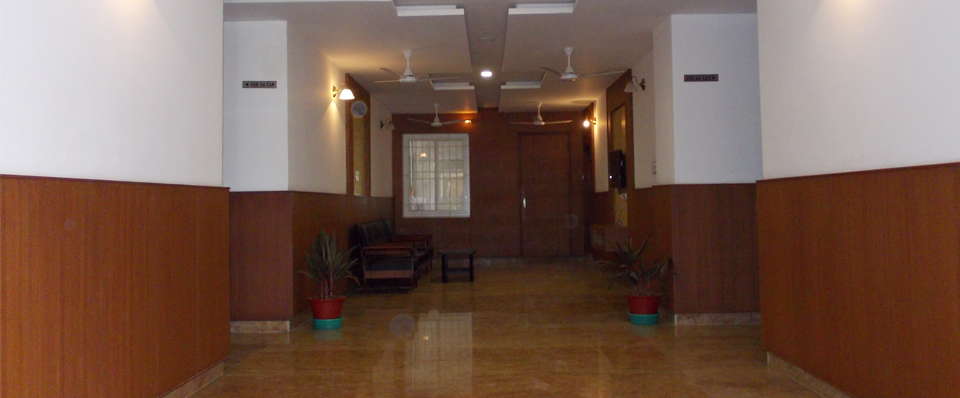
HOTEL KRA is situated near the old bus stand and the Big Temple (LORD BRIHADEESWAR temple ). it is Conveniently located within a small distance of many famous sites

BRIHADEESWAR temple or the Big temple is the prime attraction of Thanjavur. BRIHADEESWAR temple was built in the early 11th century by Rajaraja Chola I. The temple is built in Dravidian style of architecture in granite. BRIHADEESWAR temple, known also as Rajarajesvaram, is one of the well preserved Heritage Sites in Tamil Nadu. The temple dedicated to Lord Shiva has a 2.7 m high Shivalinga, which is about 7 m in diameter. The construction which encloses sanctum sanctorum is known by the name 'Periya Kovil' or the Big temple. The 70 m high Vimana of the temple is built in such an architectural precision, that its shadow never falls outside itself. The Shikharam, which weighs about81.25 tons, is carved out of a single stone. BRIHADEESWAR temple also features a massive idol of Nandi (bull), the mount of Lord Shiva. This idol, which weighs about 25 tons, has a height of about 3.6 m, length of 5.94 m and a width of 5.56 m. This idol is seated in Nayak Mandapam, which is decorated with intricate carvings. The ceiling of this mandapam is noted for its 1000 year old frescoes. Portraits of Sevappanayakan and his son Achyutappa Nayak (the early Nayak rulers) can also be seen on the front pillars of Nandi Mandapam.


Thanjavur Royal Palace is one of the most popular attractions of Thanjavur. Thanjavur Royal Palace, situated within the Vijaynagara Fort complex, was the residence of the Nayak Kings of Thanjavur. The royal palace, built in 16th century, later became the seat of the Maratha rulers of Thanjavur in the 17th century. Thanjavur Royal Palace offers Nayak Hall, Durbar Hall, Serfojis Saraswati Mahal Library and the arsenal tower for the tourists. Nayak Hall, built by the Nayaks, house Thanjavur Art Gallery, where various Thanjavur artifacts belonging to the period of Cholas are displayed. Durbar Hall, built by the Marathas, displays a throne canopy decorated in Thanjavur styled mirror-glass works. Serfoji's Saraswati Mahal Library, situated adjacent to the Nayak Hall, houses a rare collection of Sanskrit books and palm-leaf manuscripts. The palace also offers clear view of the Vijaynagara Fort complex and the Gopuram and the Vimana of the BRIHADEESWAR temple from the top of the arsenal tower, the erstwhile Palace watch tower and the arsenal of the Thanjavur Kings till 1855.


The Nandi has always had an important place in Hindu mythology. Here, one can see a massive idol of this divine bull. The Nandi (the divine vehicle of Lord Shiva) is a monolith measuring 12 feet in height, 19.5 feet in length and 18.25 feet in width, and weighing about 25 tons. Some believe that the stone came from a bed of gneiss at the foot of the Pachaimalai hills near Perambulur. Another version is that the stone was brought over from the bed of the River Narmada in the north. It is seated in an ornately sculpted mandapam called the Nayak Mandapam. According to legend, the Nandi was growing in size and people fearing that it might grow out of the mandapam, stuck a nail at its back to stunt the growth. Since then, it has remained stationary. On the ceiling of the Nandi Mantapam, are colourful frescos that are over 1000 years old and still maintain their magnificence. Two portraits statuesque on the front pillars of the Nandi Mandapam are pointed out as those of Sevappanayakan (the first Nayak ruler) and of his son Achyutappa Nayak.


Grand Anicut is one of the prime destinations of the tourists visiting Thanjavur. Situated nearby Trichy, the Grand Anicut or the Kallanai is one of the heritage sites of Tamil Nadu which is still in use. Grand Anicut was built by the Chola King Karikalan around 1st Century AD on the Cauvery River at the beginning of Cauvery delta. The 329 m long and 20 m wide Grand Anicut is considered among the oldest dams of the world.


Siva Ganga Garden is one of the main attractions of Thanjavur. Siva Ganga garden is located within the Vijaynagara Fort nearby the Thanjavur Palace, towards the North East of BRIHADEESWAR temple. The garden features a large square tank, built in the 16th century, to provide water to the Thanjavur Palace. The garden as well as the tank was built by Sevappa Nayaka, the 16th century Nayak ruler of Thanjavur. Siva Ganga Garden has become a popular picnic spot in Thanjavur, as it features a park and a well maintained garden with rare species of flowering plants.


Thanjavur Art Gallery, situated within the Thanjavur Royal Palace, is one of the main attractions of Thanjavur town. Thanjavur Art Gallery, which is housed in the Nayak Hall of the place, has an extensive collection of stone and bronze statues and idols belonging to the Chola period (8th 9th centuries). Bronze statues belonging to the Pallava period are also displayed here. Art Gallery also displays murals, paintings, sculptures and other artifacts that can be dated to the period in between 8th to 18th centuries. A statue of Raja Serfoji can also be seen in the Thanjavur Art Gallery.






